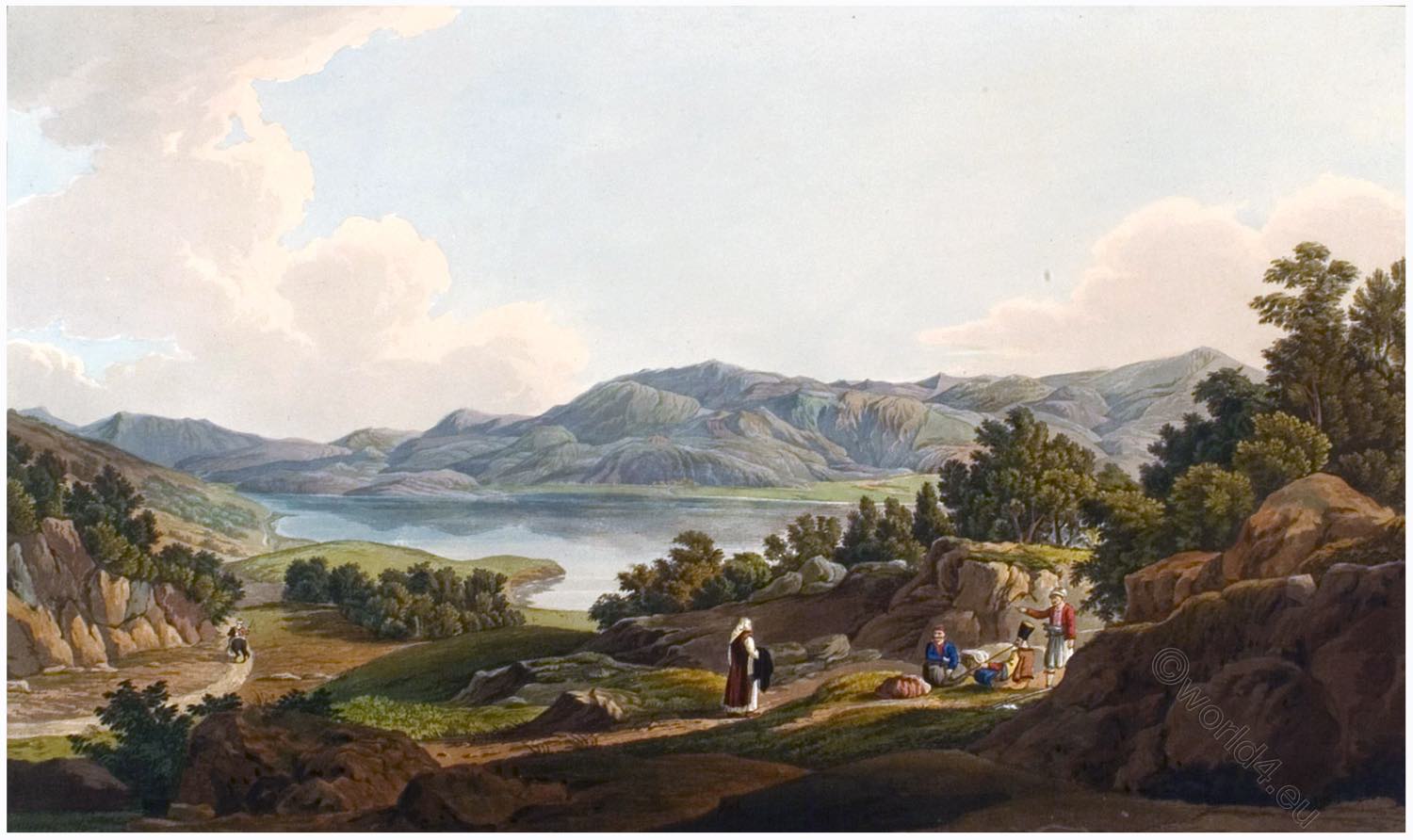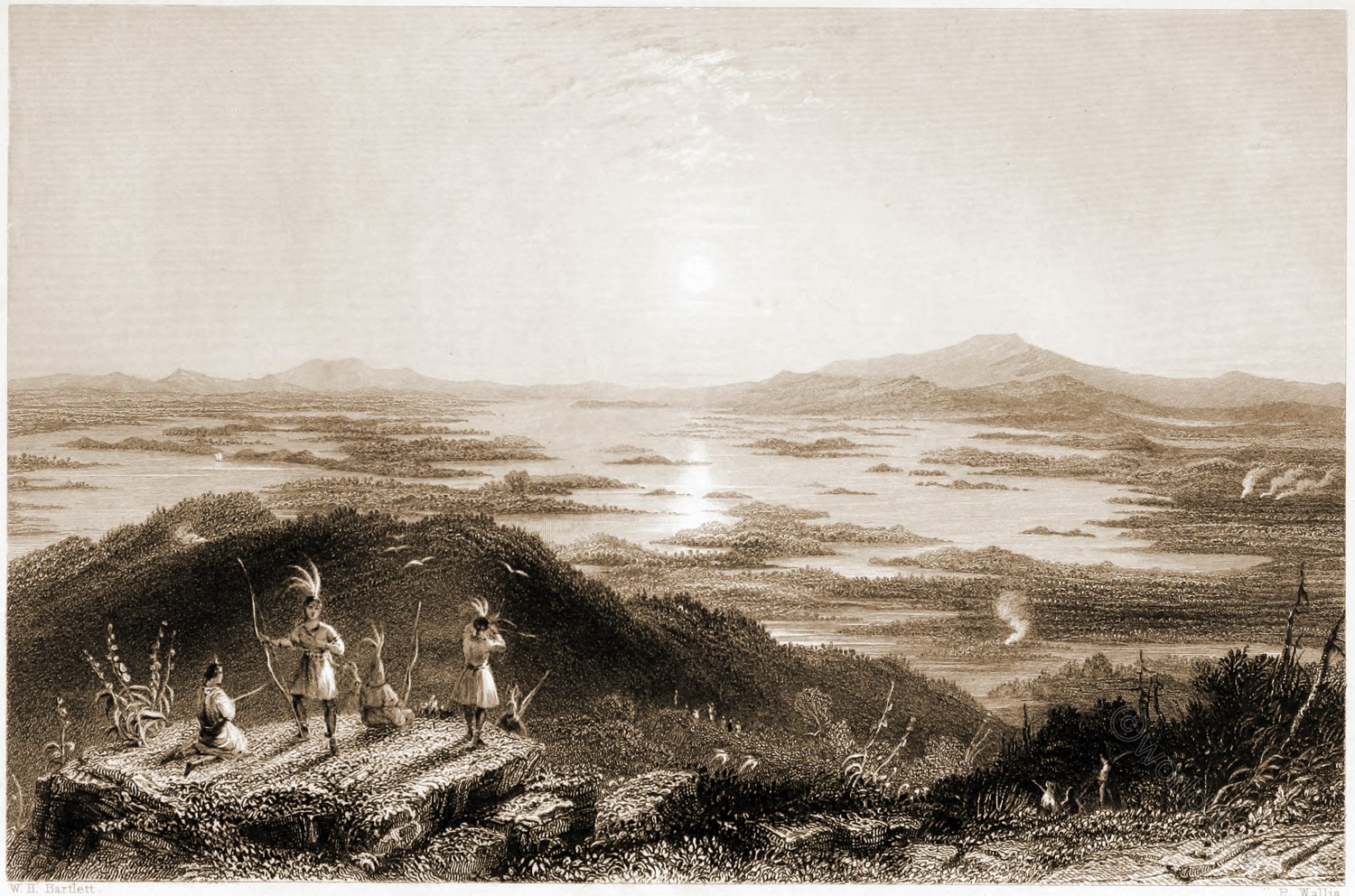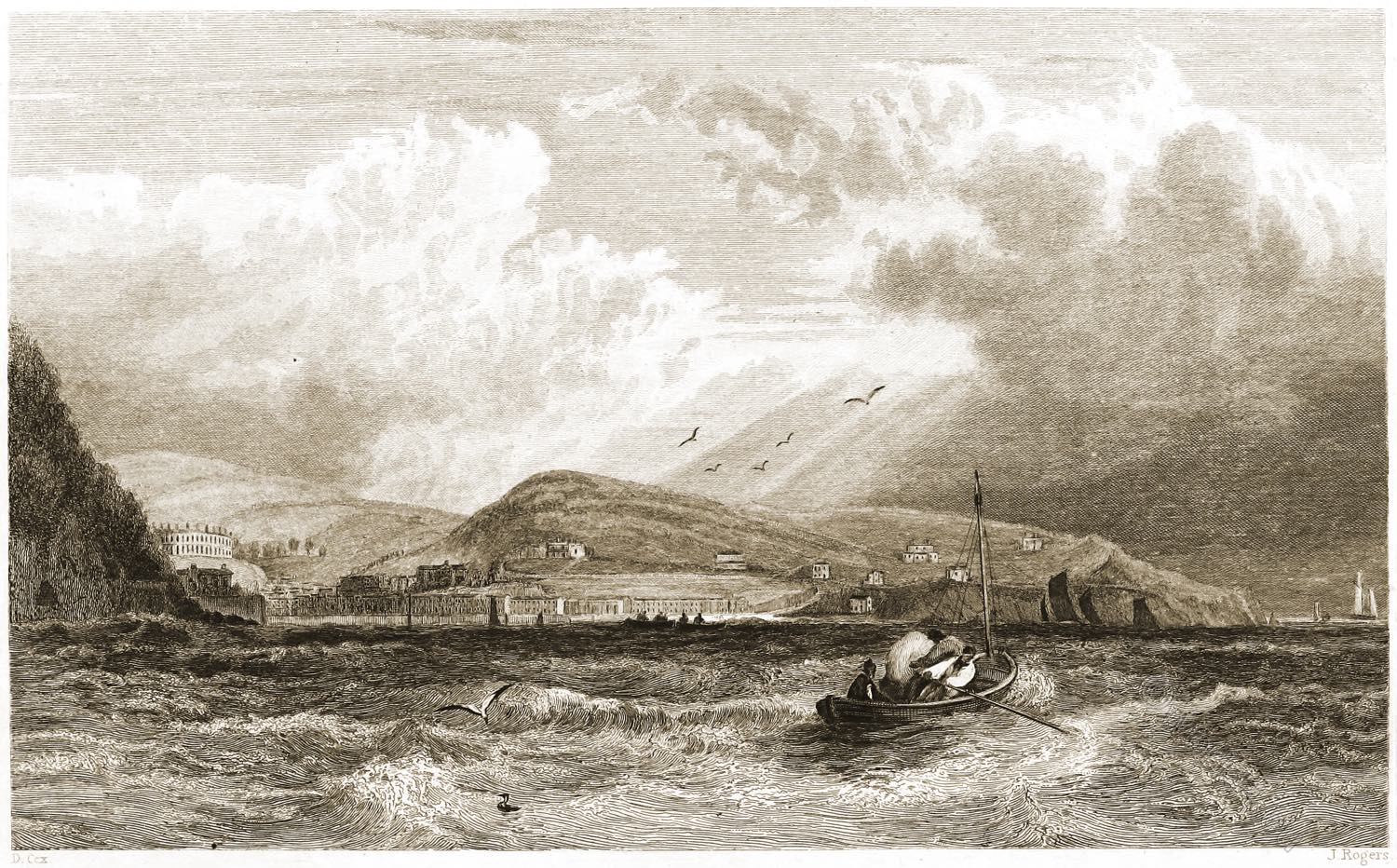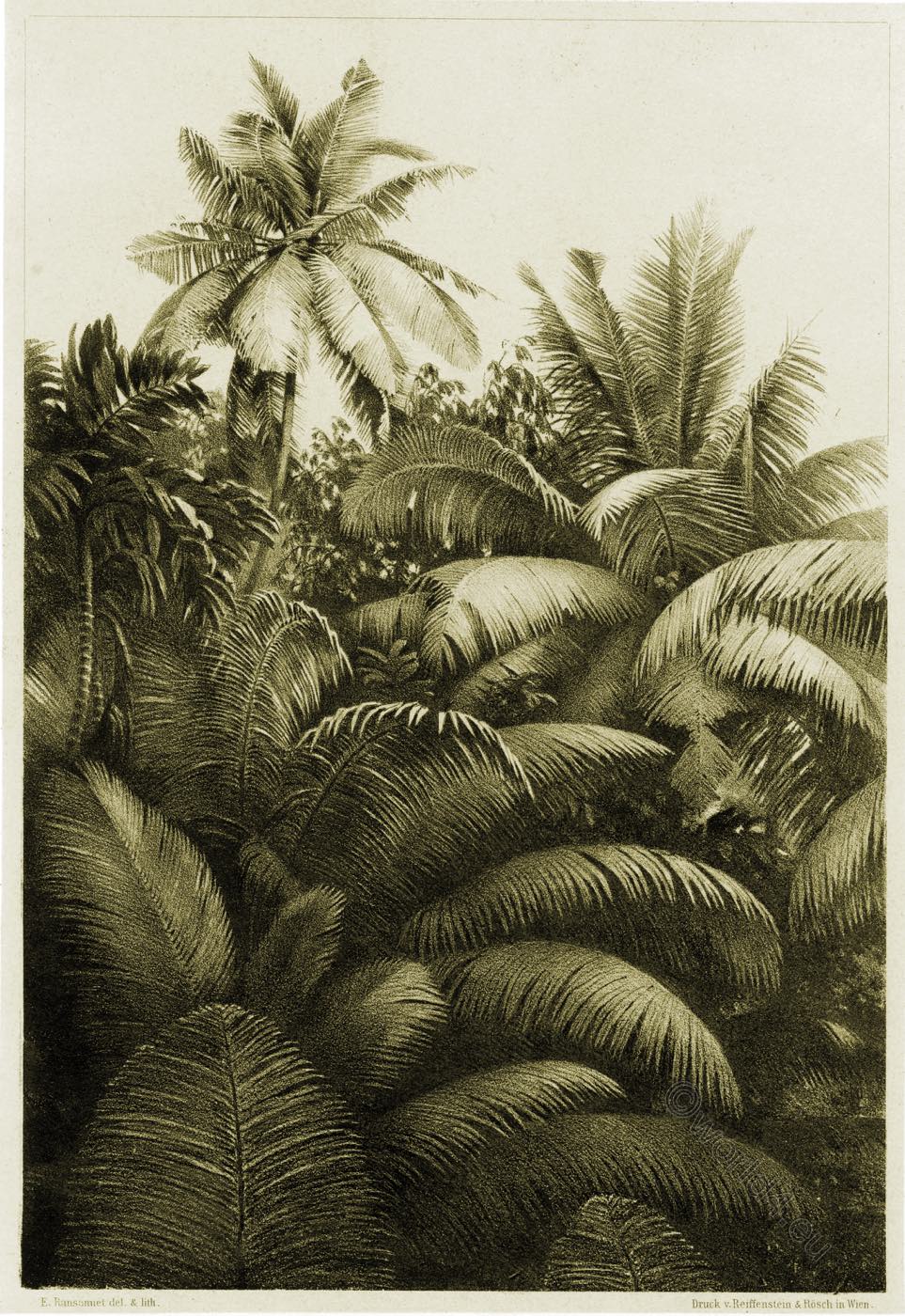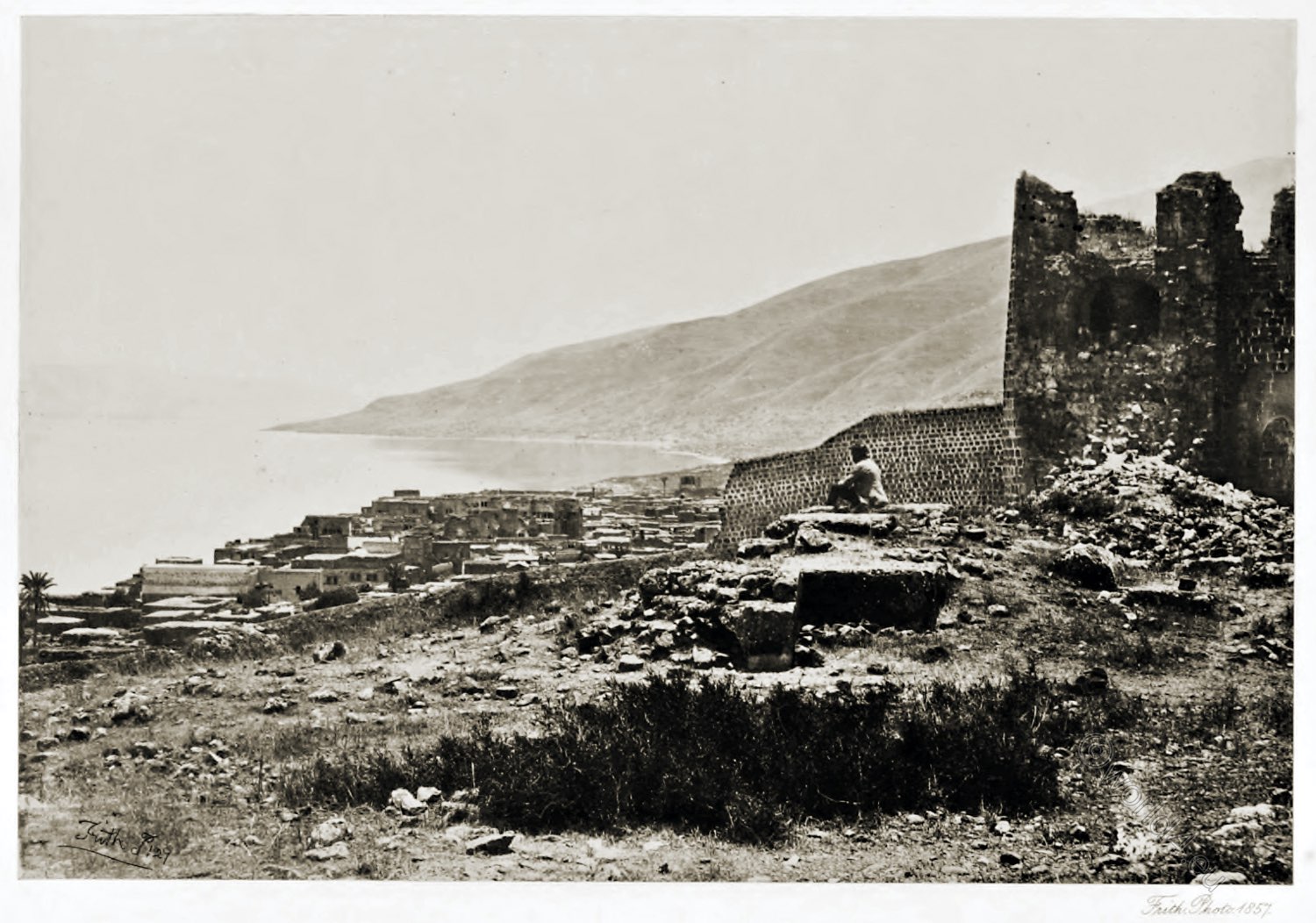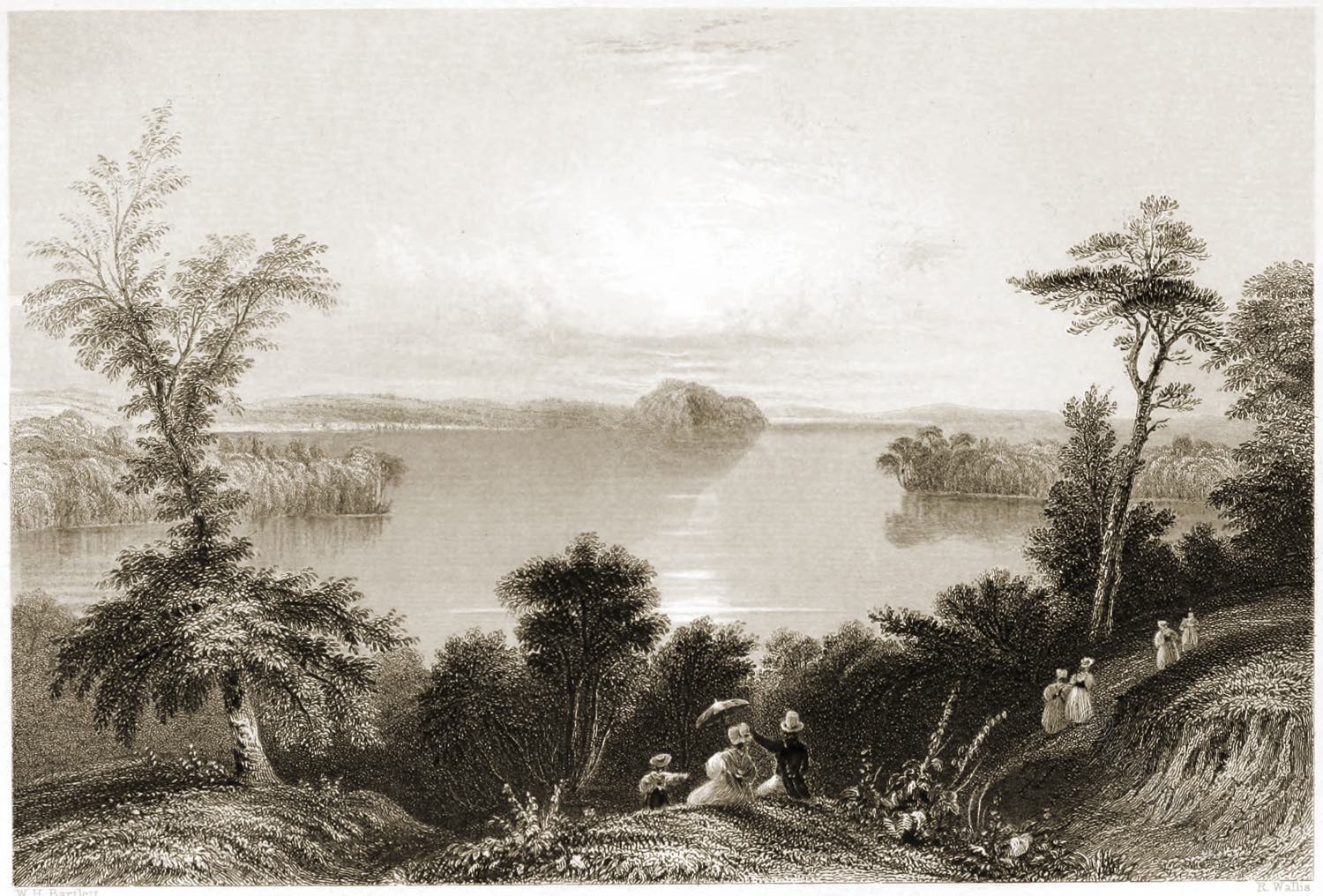
Saratoga Lake
A singular feature of American scenery is the great number and beauty of its small fresh-water lakes, from one mile to twenty in circumference, fed universally by subjacent and living springs, with outlet rivers which carry off all that is superfluous, and with shores always richly fringed with foliage, and oftenest hilly and picturesque. They lie in the midst of the wild forests, like silver mirrors, tranquil and lovely, mingling a refinement and an elegance with the bold character of the scenery, which contrasts, like Una, with the couchant Lion. Most of them are feeders to the great lakes and rivers. There are counted fifteen which send their waters into Lake Ontario, from the side of New York alone, a fact which gives a fair idea of their numbers, while it shows the resources, so difficult to conceive, of those vast plains of water.
Saratoga Lake must depend for celebrity on the campaigns of General Burgoyne, and its fish dinners. Of the first, the history has been written and read. Of the last, the traditions are oral; but while appetite returns, and trout venture to the angler’s hook, the memory will be renewed. The Springs are distant only three miles; and hither drive the more luxurious visitors of Saratoga, to dine in parties, those coming early who prefer sympathy with the catastrophe of the fish, and broiling themselves, during the morning, in a flat-bottomed boat among the trout-catchers.

There was a gay party on this lake some six or eight years since, fishing and airing their wit, under the auspices of a belle of some fame and authority. The boat had been pulled into water of five or six feet depth, on the eastern side, and the ladies sat at the ends of their rods, about forty yards from the shore, watching their floats, which lay on the surface of the glassy water like sleeping flies, but, as the old fisherman in the bow could have told them, laughing loud enough to fright even the eels from their appetites.
After several hours’ bobbing, without bite or nibble, the belle above mentioned discovered that her hook was caught at the bottom. She rose in the stern, to draw it up more easily, and, all the party leaning over at the same time, she lost her balance, and, in falling overboard, upset the boat. For the first minute it was a scene of some terror. The gentlemen were very near drowning the ladies, and the ladies the gentlemen; but the old fisherman, a tall fellow who knew the ground, and was just within his depth, quietly walked about, picking them up one by one, and giving them a hold of the inverted gunwale, and so pushed them safely to shore, suspended round the boat, like herrings on a hoop. Nobody caught cold ; other people had caught fish they dined; merrily, and the principal actor in the scene has since been known by the sobriquet of the diving belle.
There is an Indian superstition attached to this lake, which probably had its source in its remarkable loneliness and tranquillity. The Mohawks believed that its stillness was sacred to the Great Spirit, and that, if a human voice uttered a sound upon its waters, the canoe of the offender would instantly sink.
A story is told of an Englishwoman, in the early days of the first settlers, who had occasion to cross this lake with a party of Indians, who, before embarking, warned her most impressively of the spell. It was a silent, breathless day, and the canoe shot over the smooth surface of the lake like a shadow.
About a mile from the shore, near the centre of the lake, the woman, willing to convince the savages of the weakness of their superstition, uttered a loud cry. The countenances of the Indians fell instantly to the deepest gloom. After a moment’s pause, however, they redoubled their exertions, and, in frowning silence, drove the light bark like an arrow over the waters. They reached the shore in safety, and drew up the canoe, and the woman rallied the chief on his credulity. “The Great Spirit is merciful,” answered the scornful Mohawk; “He knows that a white woman cannot hold her tongue.”
Saratoga Lake is eight miles in length, and a little over two miles broad. It is about eight miles west of Hudson River, which receives its outlet waters under the name of Fish Creek. The same stream, before its entrance into the lake, is called by the sesquipedalian title of Kayaderosseras River. With its pretty maiden name it loses its beauty, and flows forth from its union with the lake, in a dull and murky stream, and so drops sluggishly into the Hudson. Ah! many an edifying homily has been read from a blinder text.
Source: American Scenery; or, Land, Lake, and River Illustrations of Transatlantic Nature. From Drawings by W. H. Bartlett. Engraved by R. Wallis, J. Cousen, Willmore, Brandard, Adlard, Richardson, &c. The Literary Department By N. P. Willis, Esq. London: George Virtue 26, Ivy Lane. 1840.
Continuing

Discover more from World4 Costume Culture History
Subscribe to get the latest posts sent to your email.

